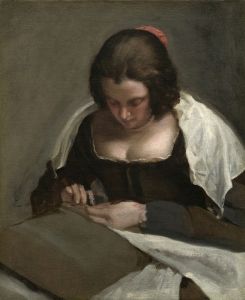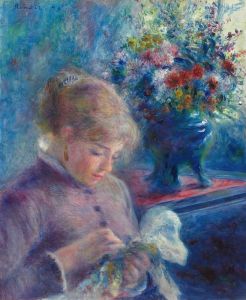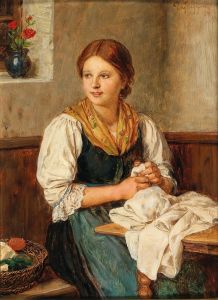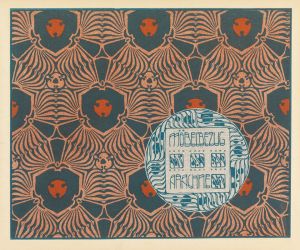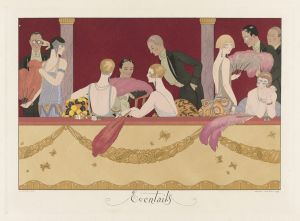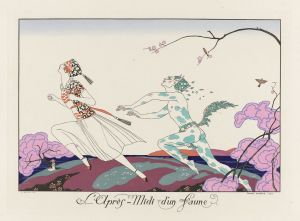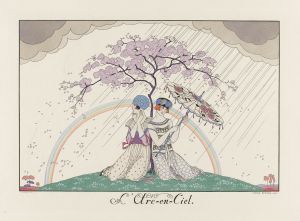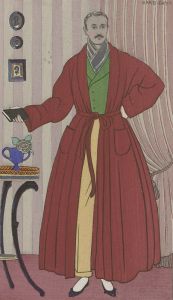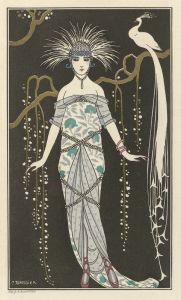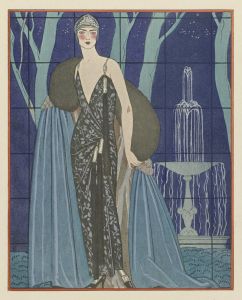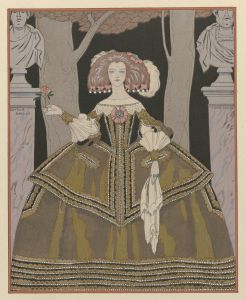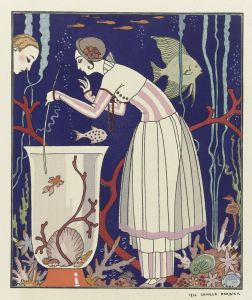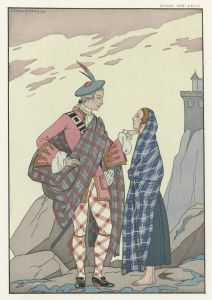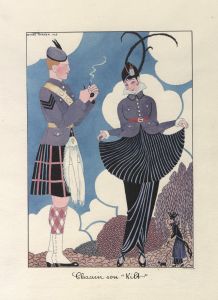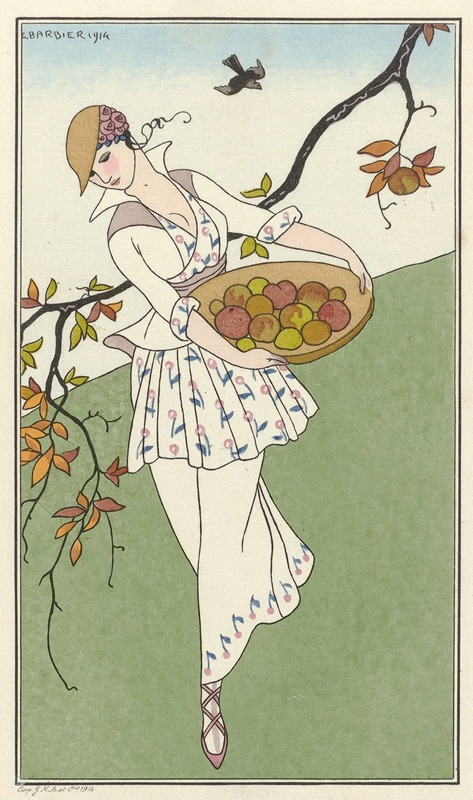
Toilette de taffetas
A hand-painted replica of George Barbier’s masterpiece Toilette de taffetas, meticulously crafted by professional artists to capture the true essence of the original. Each piece is created with museum-quality canvas and rare mineral pigments, carefully painted by experienced artists with delicate brushstrokes and rich, layered colors to perfectly recreate the texture of the original artwork. Unlike machine-printed reproductions, this hand-painted version brings the painting to life, infused with the artist’s emotions and skill in every stroke. Whether for personal collection or home decoration, it instantly elevates the artistic atmosphere of any space.
Toilette de taffetas is an artwork by the French illustrator and painter George Barbier, who was a prominent figure in the Art Deco movement. Born in Nantes in 1882, Barbier became known for his elegant and sophisticated illustrations, which often depicted fashionable women and scenes of high society. His work was characterized by its decorative style, vibrant colors, and meticulous attention to detail.
Toilette de taffetas, which translates to "Taffeta Toilet," is one of Barbier's many illustrations that capture the essence of early 20th-century fashion and luxury. The piece showcases a woman dressed in an exquisite taffeta gown, a fabric known for its crisp texture and lustrous sheen. The illustration reflects the opulence and refinement of the era, highlighting Barbier's skill in rendering the intricate details of the fabric and the elegance of the figure.
Barbier's career began to flourish in the 1910s, and he quickly became a sought-after illustrator for fashion magazines, books, and theater productions. His work appeared in publications such as "Gazette du Bon Ton," a leading French fashion magazine that featured contributions from some of the most talented artists of the time. Barbier's illustrations for the magazine often depicted the latest trends in haute couture, and his ability to capture the spirit of the age made him a favorite among readers and designers alike.
In addition to his work in fashion illustration, Barbier also designed costumes and sets for the theater, including productions for the Ballets Russes, a renowned ballet company known for its innovative and avant-garde performances. His designs were celebrated for their creativity and attention to detail, further establishing his reputation as a versatile and talented artist.
Toilette de taffetas exemplifies Barbier's mastery of the Art Deco style, which emerged in the 1920s and 1930s. This artistic movement was characterized by its emphasis on geometric shapes, bold colors, and luxurious materials. Barbier's work often incorporated these elements, creating a sense of glamour and sophistication that resonated with the tastes of the time.
Throughout his career, Barbier collaborated with other notable artists and designers, including Erté (Romain de Tirtoff) and Paul Poiret, a leading fashion designer known for his innovative and extravagant creations. These collaborations further cemented Barbier's status as a key figure in the world of fashion and design.
George Barbier's influence extended beyond his lifetime, as his work continued to inspire future generations of artists and designers. His illustrations remain highly regarded for their beauty, elegance, and historical significance, offering a glimpse into the fashion and culture of the early 20th century.
Toilette de taffetas is a testament to Barbier's artistic talent and his ability to capture the essence of an era defined by its pursuit of beauty and refinement. The illustration stands as a valuable piece of art history, reflecting the sophistication and glamour that characterized the Art Deco movement and the world of high fashion during Barbier's time.





